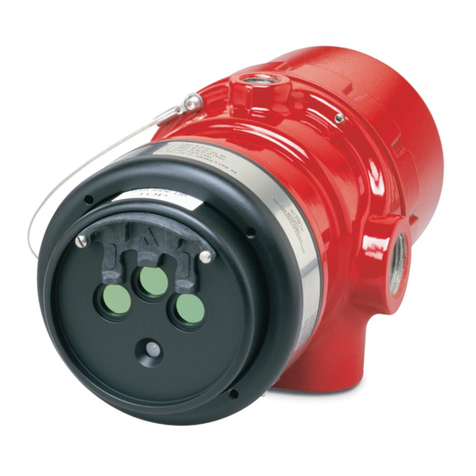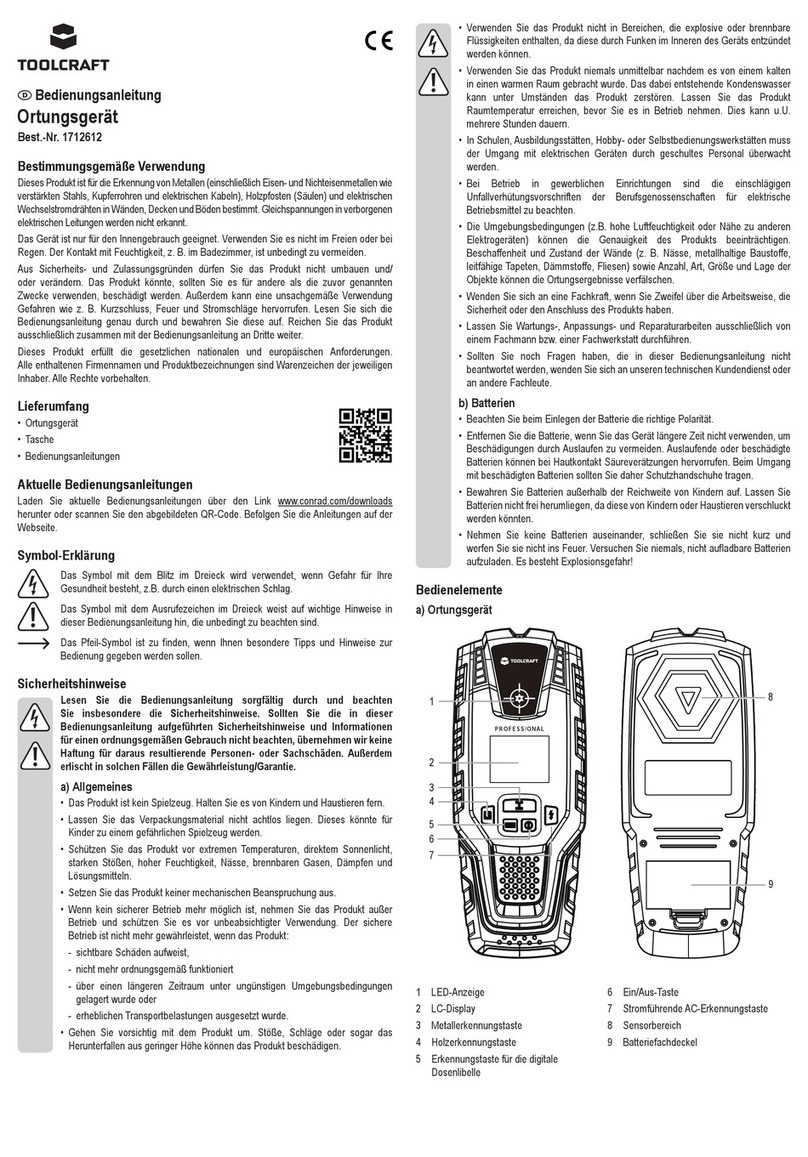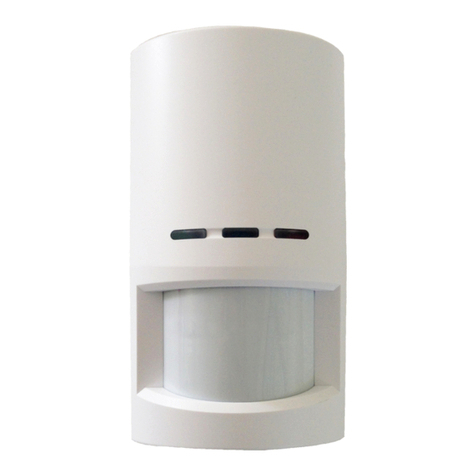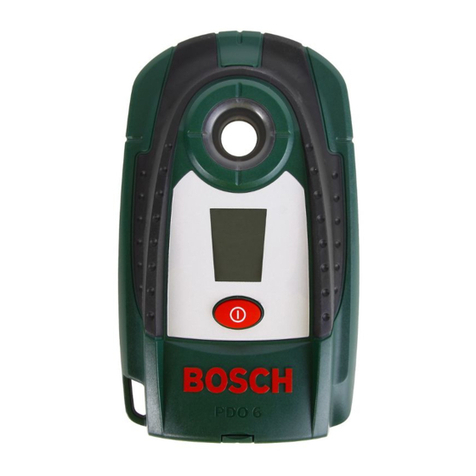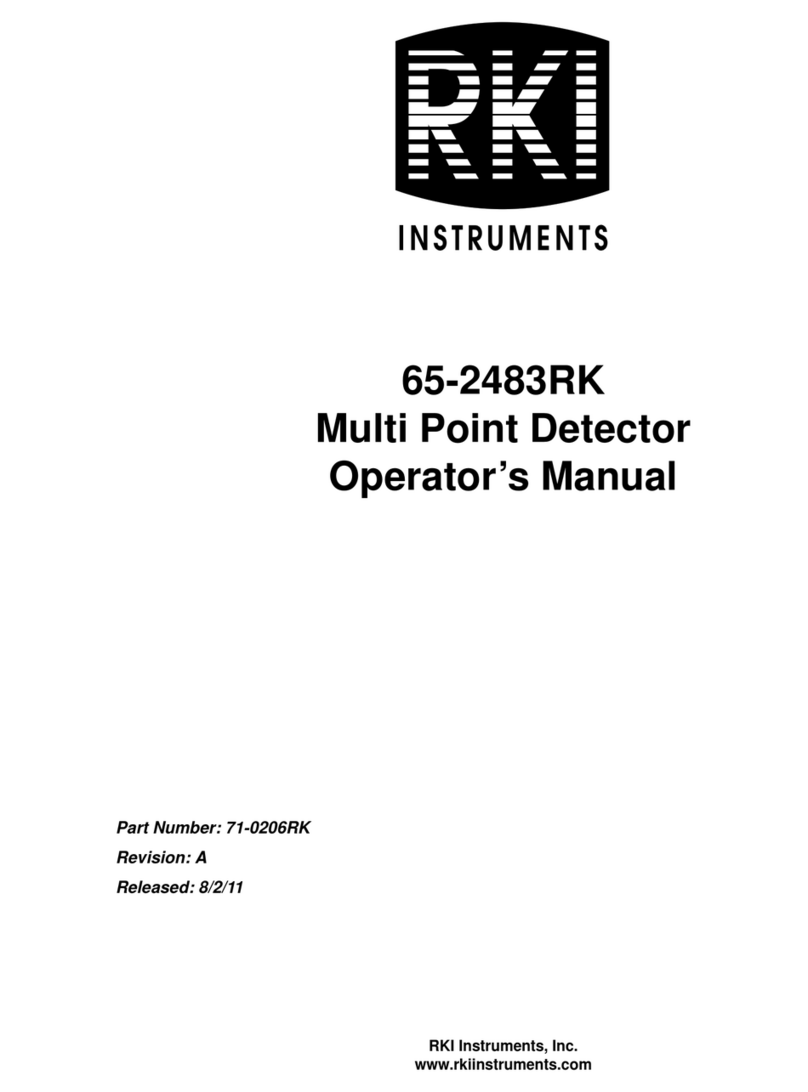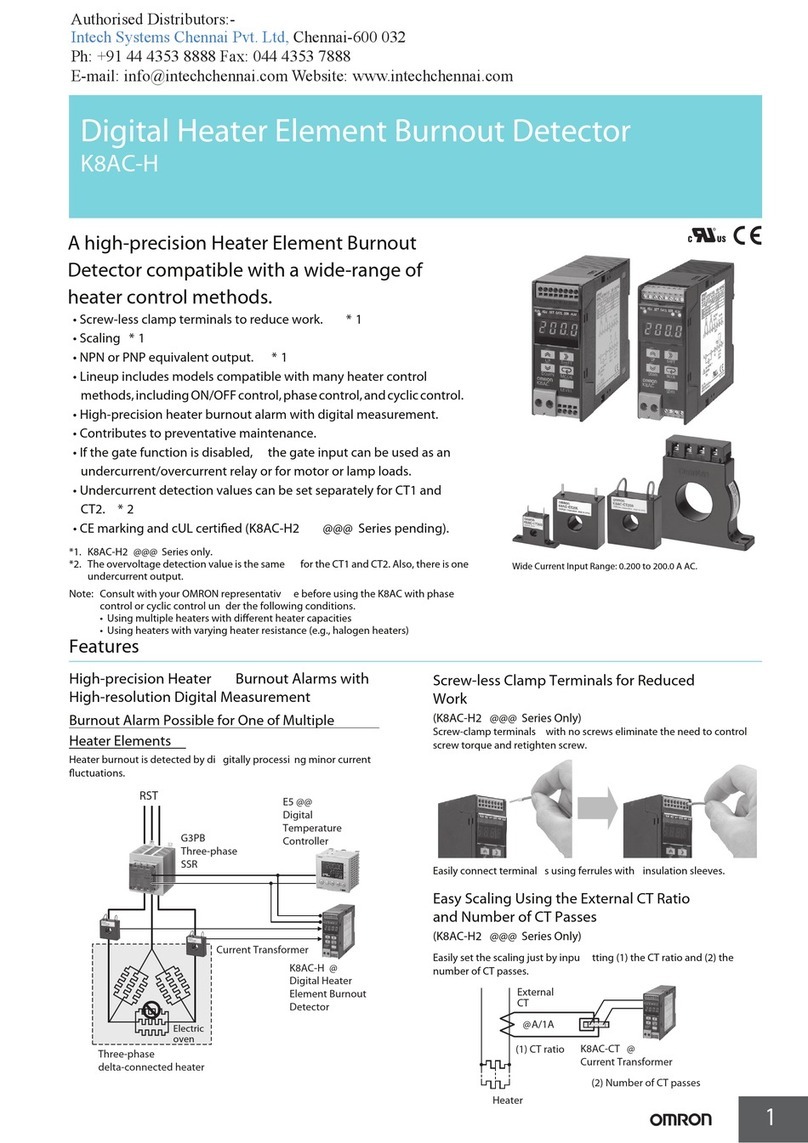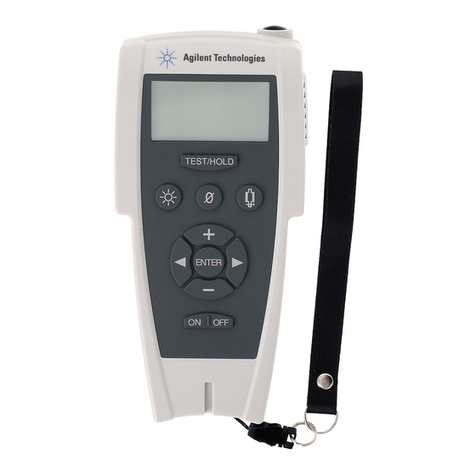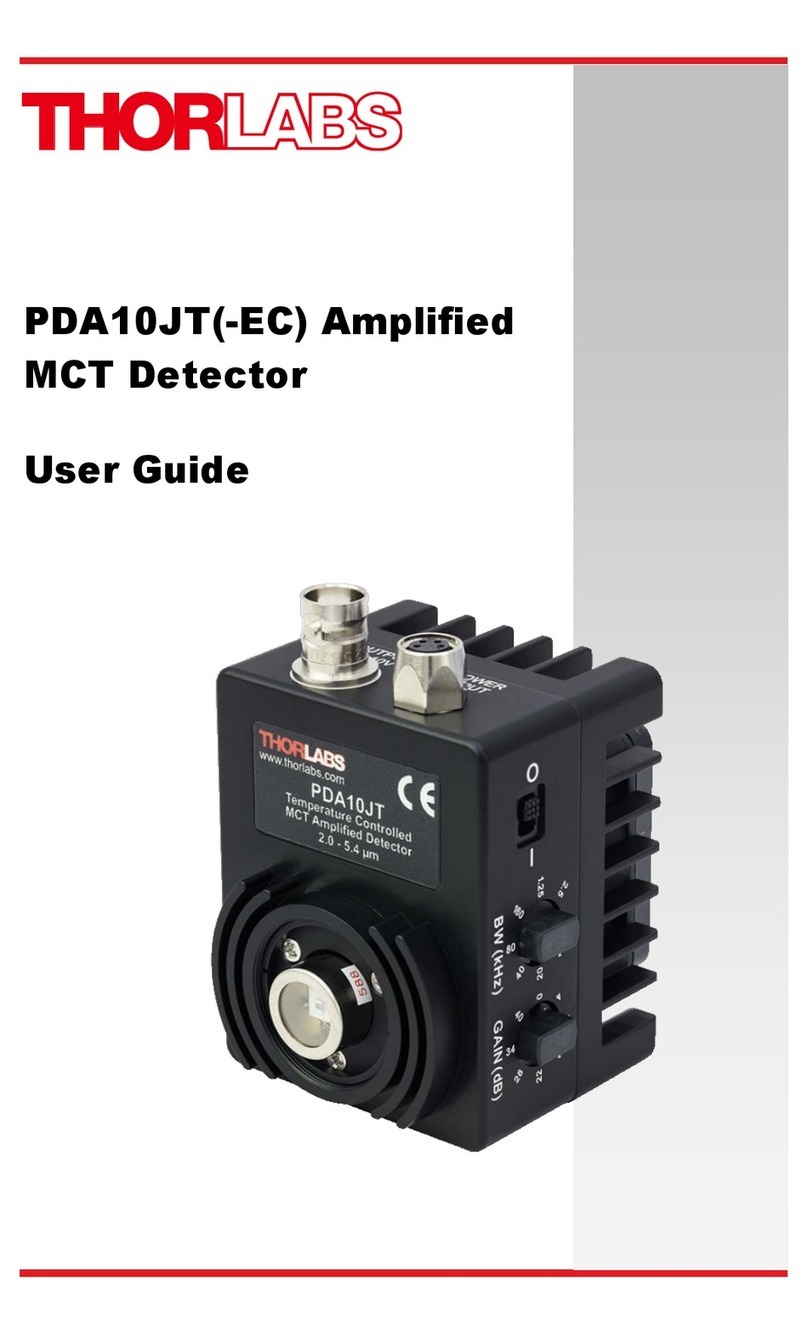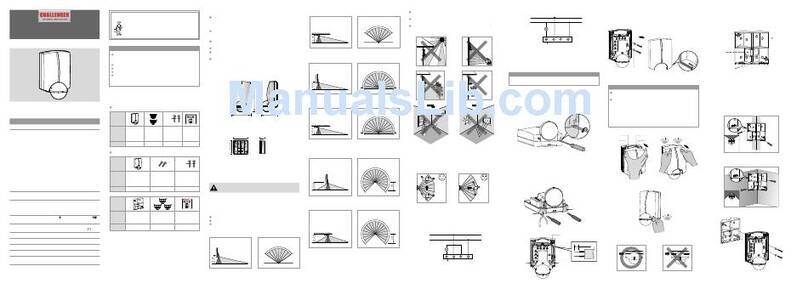
but the operation of the device may no longer be reliable)
Attachment of the Detector
At the bottom there is a screw that can be used to attach the alarm either directly to a stand (tripod),
to a suitable thread (mostly midway between fishing rods). Or the alarm can be used screwed in a
classic, separate fishing fork and fastened to the ground where it’s supposed to monitor the place.
It should be placed at least 70 cm above-ground.
Pairing with the Receiver
1. Switch the receiver to learning mode (see the instructions of your receiver type)
2. Turn on the alarm (a signal is sent when turned on that the receiver stores in its memory)
3. From now on, the set is paired and you can evaluate the signal from your wireless motion detector on your
receiver.
The motion detector can be paired with the FISHTRON RX MULTI, FISHTRON RX MINI and FISHTRON RX SIX
receivers. Also with the FISHTRON WRL1 and FISHTRON WRL2 wireless LED lamps.
Stabilization Time
The PIR motion sensors are very sensitive to temperature changes. The detector should be placed somewhere where
it will perform its function, preferably 30 minutes before switching on so that the sensor’s temperature can be adjusted
to the ambient temperature. Otherwise, false alarms will be transmitted after turning it on until the temperature
stabilises if the sensor isn’t thermally stabilised. An interval of approximately 20 seconds is set between the alarms.
Time to Leave the Area
After turning on, the detector is blocked for one minute to allow time to leave the area. During this time the LED on
the device flashes green (if the battery is OK) or flashes red (if the battery needs replacing).
Rain Protection
The detector’s design protects it against normal weather conditions. It is therefore unnecessary to cover it and protect
it against rain under normal conditions.
Power Supply
2 LR1 batteries (commonly used in FLAJZAR bite alarms, available at www.flajzar.com).
The battery is replaced by pushing and ejecting the cover at the back of the detector
where the battery holder is located.
Energy Saving - Maximising Battery Life
The batteries usually last throughout the fishing season with normal use. However, in order to achieve the longest
battery life possible, the detector should be turned off when it isn’t monitoring. When the fisherman normally moves
in space, it isn’t enough just to turn the receiver off, it’s also needed to turn the detector off as it reacts to every motion

